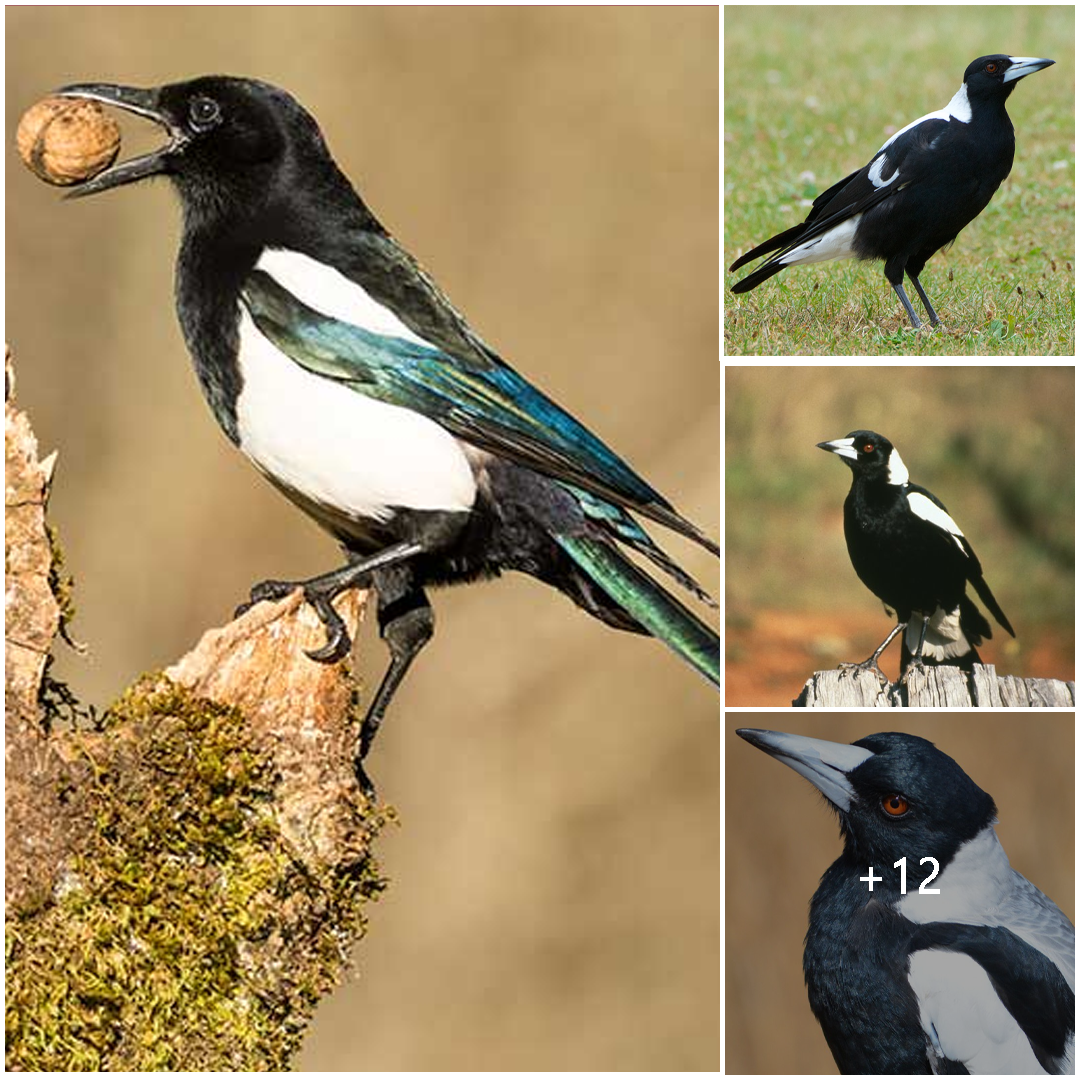
The Enigmatic Magpie: A Bird of Contrasts
The magpie, known scientifically as Pica pica, is a fascinating bird that holds a unique place in folklore, literature, and ecological systems around the world. With its distinctive black and white plumage and complex social behavior, the magpie has captured the imagination of people for centuries.
Appearance and Characteristics: The magpie is easily recognizable by its striking black and white plumage, which contrasts sharply against its long tail and wings. Its black head, neck, and back are offset by patches of white on its belly, shoulders, and wings. The bird’s long, pointed bill is well-suited for probing the ground in search of food, while its sharp eyesight and keen intelligence make it a formidable predator and scavenger.
Habitat and Distribution: Magpies are found in a wide range of habitats across Europe, Asia, and parts of North America. They are highly adaptable birds, able to thrive in diverse environments such as woodlands, parks, gardens, and urban areas. Magpies are often associated with human habitation, where they can scavenge for food and build nests in trees or man-made structures.
Behavior and Social Structure: Magpies are known for their complex social behavior and highly organized social structure. They are highly vocal birds, with a wide range of calls and vocalizations used for communication within their social groups. Magpies are also intelligent and curious creatures, known for their ability to solve problems and adapt to changing environmental conditions.
In addition to their vocalizations, magpies use a variety of visual displays and body language to communicate with each other. They engage in elaborate courtship rituals during the breeding season, which often involve mutual preening, vocal duets, and aerial displays. Magpies are also territorial birds, fiercely defending their nesting sites and foraging areas from intruders.
Diet and Feeding Habits: Magpies are omnivorous birds with a varied diet that includes insects, small mammals, birds, eggs, fruit, seeds, and carrion. They are opportunistic feeders, scavenging for food in a wide range of habitats and using their keen eyesight to locate potential prey. Magpies are also known to cache food items for later consumption, storing them in hidden locations such as under leaves or in the ground.
Cultural Significance: Throughout history, magpies have been both revered and reviled in different cultures around the world. In some traditions, magpies are seen as symbols of good luck, fortune, and intelligence, while in others they are associated with superstition and bad omens. In folklore and literature, magpies are often depicted as cunning and mischievous creatures, capable of both great feats and destructive acts.
Despite their mixed reputation, magpies play an important ecological role as scavengers and predators, helping to control insect populations and recycle nutrients in their ecosystems. While they may sometimes come into conflict with humans, magpies are a fascinating and integral part of the natural world, deserving of our respect and appreciation.





